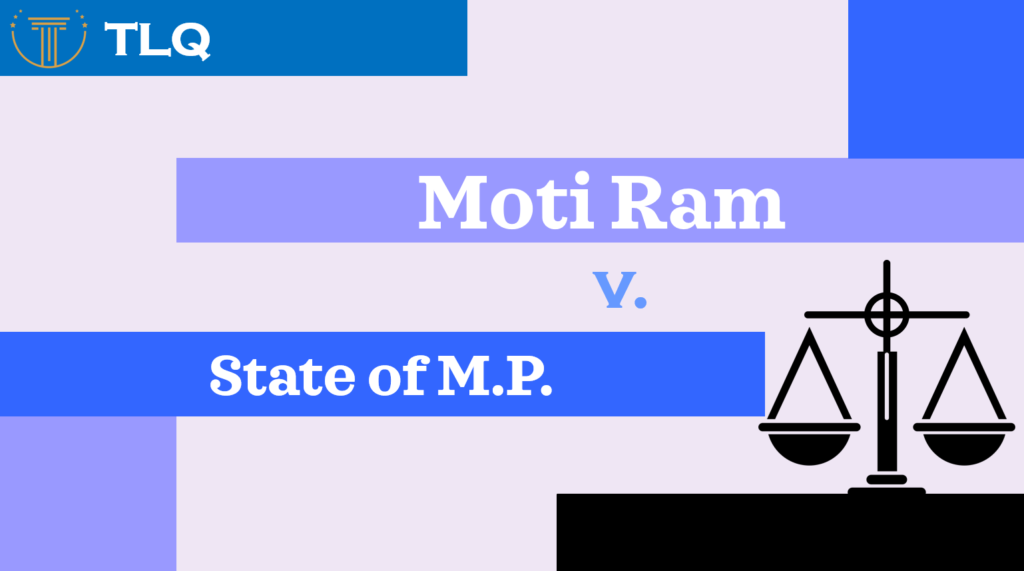Published On: 9 October, 2023
S.R. Bommai v. Union of India
BENCH: Kuldip Singh, P. B. Sawant, Katikithala Ramaswamy, S. C. Agarwal, Yogeshwar Dayal, B. P., Jeevan Reddy, S. R. Pandian, A. M. Ahmadi, J. S. Verma.
DECIDED ON: 11th March 1994
COURT: Supreme Court of India.
INTRODUCTION:
“S.R. Bommai v. Union of India” is a pivotal legal case that stands as a cornerstone in Indian constitutional law. Decided in 1994 by the Supreme Court of India, this landmark case addresses the complex and significant issue of the dismissal of state governments and the imposition of the President’s Rule under Article 356 of the Indian Constitution. Named after S.R. Bommai, the Chief Minister of Karnataka at the time, this case emerged against the backdrop of political turmoil and controversies surrounding the use of Article 356 to dismiss democratically elected state governments.
At its core, the case posed a fundamental question: under what circumstances and on what grounds can the President of India, acting on the recommendation of the Union Council of Ministers, dismiss a state government and assume direct control of the state’s affairs? The Supreme Court’s ruling in the Bommai case established critical principles that continue to shape Indian federalism and the delicate balance of power between the central government and the states.
FACTS OF THE CASE:
The case of “S.R. Bommai v. Union of India” centered around the political upheaval in the Indian state of Karnataka during the late 1980s and early 1990s. This period was marked by frequent changes in state governments, alliances, and defections among legislators. Following the resignation of Chief Minister S.R. Bommai, the Governor of Karnataka recommended the imposition of President’s Rule in the state to the President of India, acting on the advice of the Union Council of Ministers. President’s Rule was subsequently imposed, leading to the dissolution of the state legislative assembly. S.R. Bommai and other aggrieved parties challenged this action in the courts, and the case ultimately reached the Supreme Court. The central issues revolved around the validity of the President’s Rule and whether the court could review the decision-making process. A significant development during the case was the court-ordered floor test to determine the majority support in the legislative assembly, which played a pivotal role in the court’s final judgment.
The case emerged from the political instability and disputes over the use of Article 356 of the Indian Constitution to dismiss democratically elected state governments. It became a landmark case that would clarify the conditions and procedures for the imposition of the President’s Rule and have significant implications for Indian federalism and democratic governance.
ISSUES:
Constitutional Validity of President’s Rule: The central issue in the case was whether the imposition of President’s Rule in Karnataka was constitutionally valid under Article 356 of the Indian Constitution. This article allows the President to assume control of a state when the constitutional machinery in the state has failed.
Scope of Presidential Discretion: The case examined the extent of the President’s discretionary power in accepting the advice of the Union Council of Ministers to dismiss a state government and impose central rule. It sought to clarify the boundaries of this power.
Judicial Review: The court considered whether it had the authority to review the President’s satisfaction and the advice of the Union Council of Ministers in matters related to Article 356. This raised questions about the separation of powers and the role of the judiciary in checking executive actions.
Objective Material and Mala Fide Intentions: The case focused on whether there was objective and relevant material available to justify the imposition of the President’s Rule and whether this material was influenced by extraneous or mala fide (acting in bad faith) considerations. This highlighted the importance of using Article 356 for legitimate reasons rather than political motives.
ANALYSIS:
Protection of Federalism: The Bommai case reinforced the importance of federalism in the Indian constitutional structure. It established that the imposition of the President’s Rule should be a measure of last resort and should not undermine the autonomy of state governments. This protection of federalism is crucial in maintaining a balance of power between the center and the states.
Judicial Review: The judgment clarified that the court had the authority to review the imposition of the President’s Rule, ensuring a check on the executive’s exercise of power and protecting the rule of law. This reaffirmed the judiciary’s role in upholding the Constitution.
Objective Material: The case emphasized the need for the central government to have objective and relevant material to justify the imposition of the President’s Rule, preventing its misuse for political purposes. This criterion has since acted as a safeguard against arbitrary dismissals of state governments.
Preventing Misuse: The Bommai case acted as a deterrent against the arbitrary use of Article 356 for political or partisan reasons, thereby upholding democratic principles and ensuring the sanctity of the federal structure.
Impact of the case on the present situation:
Protection of Federalism: The Bommai case continues to be relevant in safeguarding federalism in India. It reinforces the principles of cooperative federalism and delineates the boundaries of power between the central government and the states. This is particularly significant in a diverse country like India, where state governments play a crucial role in governance.
Checks and Balances: The case underscores the importance of checks and balances in a democratic system. It ensures that the executive does not misuse its powers to dismiss state governments arbitrarily and reaffirms the judiciary’s role in upholding the Constitution and protecting democratic values.
Role of the Judiciary: The Bommai judgment emphasizes the judiciary’s authority to review executive actions, including the imposition of the President’s Rule. This principle continues to guide legal interpretations and reinforces the independence and accountability of the judiciary.
Deterrence Against Misuse: The case acts as a deterrent against the arbitrary use of Article 356 for political or partisan purposes. Political actors are aware that any attempt to dismiss state governments without valid and objective reasons can face legal challenges.
Preservation of Democratic Values: Overall, the impact of the Bommai case lies in its contribution to the preservation of democratic values, the rule of law, and the protection of state autonomy within the Indian federal structure.
CONCLUSION:
In conclusion, the landmark case “S.R. Bommai v. Union of India” strengthened judicial scrutiny, democratic ideals, and federalism in the Indian constitutional framework. It clarified the conditions for imposing the President’s Rule, emphasizing it as a last resort, and introduced the significance of a floor test in assessing government stability. The judgment protected states’ autonomy, preventing the misuse of Article 356 for political purposes. It underscored the importance of objective material and upheld the judiciary’s role as a check on executive power. Ultimately, the case has left a lasting legacy, serving as a beacon for maintaining the balance of power and preserving the democratic fabric of India.




